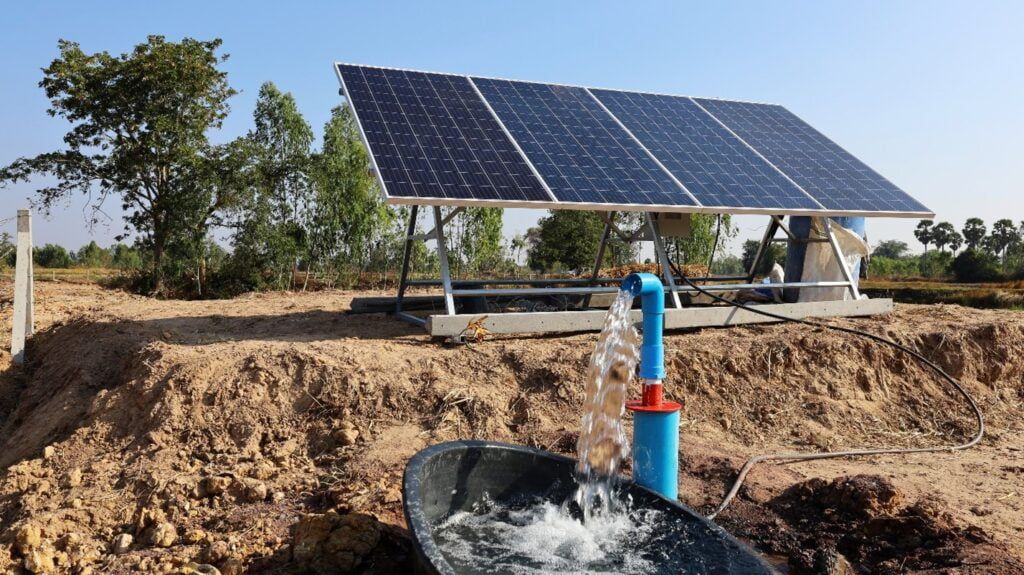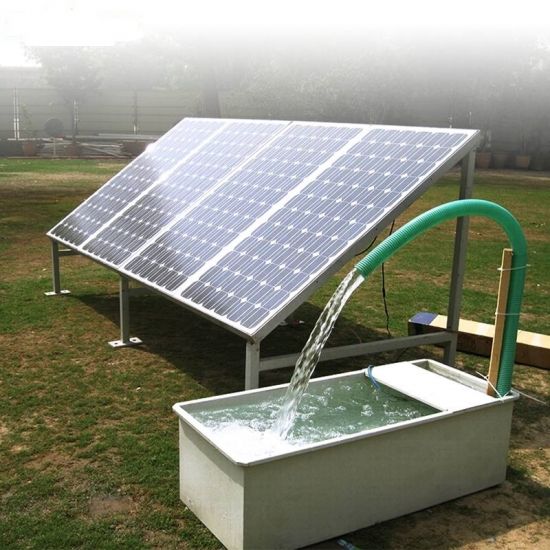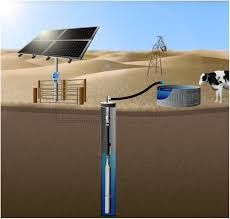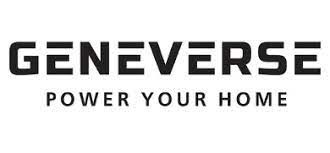Solar Well / Water Pumps
How They Work:
- Solar Panels: Solar well pumps are powered by solar panels, which convert sunlight into electricity. The size and number of panels needed depend on the pump's power requirements and the amount of sunlight available.
- Pump System: The system typically includes a pump (submersible or surface), a controller, and sometimes a battery bank. The controller manages the power flow between the solar panels and the pump.
- Water Extraction: When sunlight hits the solar panels, they generate electricity that powers the pump. The pump then moves water from the well to the surface or storage tank.


Types of Solar Well Pumps:
- Submersible Pumps: These are installed inside the well. They’re commonly used for deeper wells and are efficient in drawing water from significant depths.
- Surface Pumps: Located above ground, these pumps are used for shallower wells. They can be easier to maintain compared to submersible pumps.

Imagine the possibilities for Farm, Ranch, or Off-Grid
Solar well pumps are ideal for farms and ranches because they provide a reliable, cost-effective, and eco-friendly solution for watering livestock and irrigating crops. They harness renewable solar energy, reducing reliance on expensive and environmentally damaging diesel or electric pumps, and are perfect for remote or off-grid locations where traditional power sources may not be available.
Benefits:
- Renewable Energy: Solar well pumps use renewable energy, reducing reliance on fossil fuels and lowering greenhouse gas emissions.
- Cost Savings: After the initial investment, the operating costs are minimal because sunlight is free. Over time, this can lead to significant savings compared to traditional electric or diesel pumps.
- Low Maintenance: Solar well pumps generally have fewer moving parts and require less maintenance than conventional pumps.
- Off-Grid Capability: They are ideal for remote or off-grid locations where traditional power sources are not available.
- Environmentally Friendly: They have a lower environmental impact compared to diesel-powered pumps, as they don’t produce emissions or require fuel transportation.
Considerations:
- Initial Cost: The upfront cost of solar panels and the pump system can be high, though this is often offset by long-term savings.
- Sunlight Dependency: The system’s efficiency depends on sunlight availability, which can be affected by weather conditions and geographic location.
- Sizing and Installation: Proper sizing of the solar array and pump is crucial for efficiency. Installation might require professional help to ensure everything is set up correctly.
- Storage: In areas with variable sunlight, having a water storage tank can help ensure a consistent water supply.
Solar well pumps are a practical and eco-friendly choice for many applications, especially where traditional power sources are impractical. If you’re considering one, it’s helpful to consult with a professional to determine the best system for your needs.
















